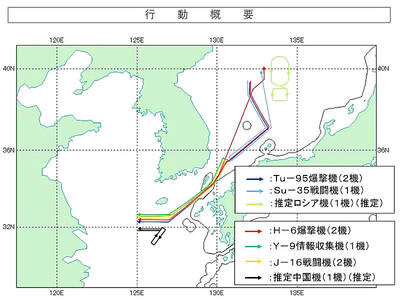The Kavalan community on Saturday celebrated the 20th anniversary of being granted official recognition as the nation’s 11th indigenous community.
The event was held in Hsinshe Village (新社) of Hualien County’s Fengbin Township (豐濱), home to the nation’s largest Kavalan population. The village is known as pateRungan in the Kavalan language.
Only about 1,500 Kavalan remain in Taiwan, Council of Indigenous Peoples data show.

Photo: Hua Meng-ching, Taipei Times
An awards ceremony was also held to recognize young Kavalan who passed the community’s language proficiency test, which aims to assist preservation of the language. The community presented NT$1,000 to each of the 20 people who obtained the Kavalan language certificate during the past year.
The gala featured a Kavalan youth forum along with traditional music and dance performances.
Kavalan filmmaker Bauki Angaw also premiered his new movie, which he filmed throughout three decades to record the lives of Kavalan, including their fight for recognition.
The celebration was meaningful, as it was organized by the Taiwan Kavalan Language and Culture Promotion Association, which is run by mostly young people, Bauki said.
It was the first time those who passed the language proficiency tests received awards, he said.
The award money came from the authorization fees from businesses that signed contracts with the community under the Indigenous Peoples Intellectual Property Act (原住民族傳統智慧創作保護條例), Bauki said.
The money obtained through the act is managed by a dedicated committee, and the revenue is used to revitalize the Kavalan culture and language, he said.
He said he hopes the community can create an environment for elderly and young people to learn the Kavalan language together.
Abas, or Pan Ssu-jung (潘思蓉), a fifth-grader at Hsinshe Elementary School in Fengbin Township, passed the elementary and intermediate-level tests in the past year and was awarded NT$2,000 on Saturday.
She said she enjoyed learning languages through games with friends at school, adding that indigenous people should learn their native language to retain their culture.
Wanu, or Pan Kai-wei (潘楷崴), a sixth-grader at Yilan County’s Wujie Junior High School, also passed the tests and received NT$2,000.
He said he learned the Kavalan language along with his family from a teacher who visits their village every week, as well as from school teachers.
Wanu is the only student in his class who is learning the Kavalan language, so he does not find many opportunities to practice it, he said.
He considers learning the language essential and is proud to be Kavalan, he added.
The Kavalan originally lived in Yilan County’s Lanyang Plain (蘭陽平原), but were forced to move to Hualien’s Karewan Village (加禮宛) by the Han Chinese.
They later joined with the Sakizaya people to fight against a Han Chinese invasion during the Qing Dynasty, which is also known as the Karewan Incident.
The Kavalan then scattered across the area from Hualien’s Fengbin Township to Taitung’s Changbin Township (長濱).
The Kavalan in Yilan County established several villages in the county’s Jhuangwei (壯圍) and Wujie (五結) townships.
Kavalan villages in Yilan, Hualien and Taitung now engage in frequent exchanges.

Theaters and institutions in Taiwan have received 28 threatening e-mails, including bomb threats, since a documentary critical of China began being screened across the nation last month, the National Security Bureau said yesterday. The actions are part of China’s attempts to undermine Taiwan’s sovereignty, it said. State Organs (國有器官) documents allegations that Chinese government officials engage in organ harvesting and other illegal activities. From last month to Friday last week, 28 incidents have been reported of theaters or institutions receiving threats, including bomb and shooting threats, if they did not stop showing the documentary, the bureau said. Although the threats were not carried out,

The Mainland Affairs Council (MAC) on Friday condemned Chinese and Russian authorities for escalating regional tensions, citing Chinese warplanes crossing the Taiwan Strait’s median line and joint China-Russia military activities breaching South Korea’s air defense identification zone (KADIZ) over the past two days. A total of 30 Chinese warplanes crossed the median line of the Taiwan Strait on Thursday and Friday, entering Taiwan’s northern and southwestern airspace in coordination with 15 naval vessels and three high-altitude balloons, the MAC said in a statement. The Chinese military also carried out another “joint combat readiness patrol” targeting Taiwan on Thursday evening, the MAC said. On

‘GRAY ZONE’ TACTICS: China continues to build up its military capacity while regularly deploying jets and warships around Taiwan, with the latest balloon spotted on Sunday The US is drawing up contingency plans for military deployments in Japan and the Philippines in case of a Taiwan emergency, Japan’s Kyodo news agency reported. They would be incorporated in a first joint operation plan to be formulated in December, Kyodo reported late on Sunday, citing sources familiar with Japan-US relations. A US Marine Corps regiment that possesses High Mobility Artillery Rocket Systems — a light multiple rocket launcher — would be deployed along the Nansei Island chain stretching from Kyushu to Yonaguni near Taiwan, Kyodo said. According to US military guidelines for dispatching marines in small formations to several locations,

The Mainland Affairs Council (MAC) yesterday confirmed that Chinese students visiting Taiwan at the invitation of the Ma Ying-jeou Foundation were almost all affiliated with the Chinese Communist Party (CCP). During yesterday’s meeting convened by the legislature’s Foreign Affairs and National Defense Committee, Democratic Progressive Party (DPP) Legislator Michelle Lin (林楚茵) asked whether the visit was a way to spread China’s so-called “united front” rhetoric, to which MAC Deputy Ministry Shen You-chung (沈有忠) responded with the CCP comment. The MAC noticed that the Chinese individuals visiting Taiwan, including those in sports, education, or religion, have had increasingly impressive backgrounds, demonstrating that the